Sri Lanka At A Glance
Within a mere area of 65,610 kilometres lie 8 UNESCO World Heritage Sites, 1,330 kilometres of coastline – much of it pristine beach – 15 national parks showcasing an abundance of wildlife, nearly 500,000 acres of lush tea estates, 250 acres of botanical gardens, 350 waterfalls, 25,000 water bodies, to a culture that extends back to over 2,500 years.
Sri Lanka packs an extraordinary variety of places to visit within its modest physical dimensions, and few islands of comparable size can boast a natural environment of such beauty and diversity. Lapped by the Indian Ocean, the coast is fringed with idyllic – and often refreshingly undeveloped – beaches, while the interior boasts a compelling variety of landscapes ranging from wildlife – rich lowland jungles, home to extensive populations of elephants, leopards and rare endemic bird species, to the misty heights of the hill country, swathed in immaculately manicured tea plantations. Nor does the island lack in man-made attractions. Sri Lanka boasts more than two thousand years of recorded history, and the remarkable achievements of the early Sinhalese civilization can still be seen in the sequence of ruined cities and great religious monuments that litter the northern plains.
Sri Lanka Holiday Destinations
Sri Lanka’s history dates back to more than 2500 years. These ancient cities and their glorious remains that are temples, fortresses, statues and irrigation feats still have the ability to make people gaze at them with reverence. Ancient sites are considered to be archaeological gold mines because they are evidence to a very rich civilization. Most of the places are declared as World Heritage Sites by the UNESCO.
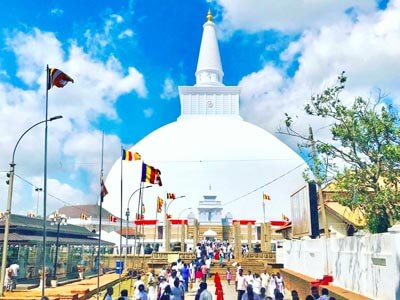
Anuradhapura
Anuradhapura is a major city in Sri Lanka. It is the capital city of North Central Province, Sri Lanka and the capital of Anuradhapura District. Anuradhapura is one of the ancient capitals of Sri Lanka, famous for its well-preserved ruins of an ancient Sri Lankan civilization. It was the third capital of the Kingdom of Rajarata, following the kingdoms of Tambapanni and Upatissa Nuwara. The city, now a UNESCO World Heritage Site, was the center of Theravada Buddhism for many centuries.
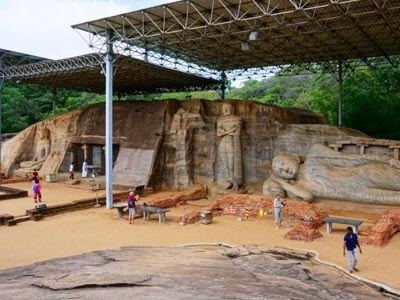
Polonnaruwa
Polonnaruwa is a testament to the discipline and greatness of the country’s mediaeval rulers and considered the best planned Archaeological relic sites in the country. The main attractions include a number of dagobas and other ruins dating back almost 1000 years. The draw card here however is Gal Vihara, a rock temple part of the Parakramabahu northern monastery. Polonnaruwa was flourishing self-sustained city with a superb irrigation system. The ancient city was declared a World Heritage Site by UNESCO in 1982.
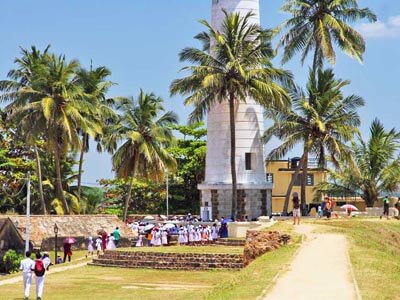
Galle Fort
Galle Fort, in the Bay of Galle on the southwest coast of Sri Lanka, was built first in 1588 by the Portuguese, then extensively fortified by the Dutch during the 17th century from 1649 on wards. The heritage value of the fort has been recognized by the UNESCO and the site has been inscribed as a cultural heritage UNESCO World Heritage Site under criteria iv, for its unique exposition of “an urban ensemble which illustrates the interaction of European architecture and South Asian traditions from the 16th to the 19th centuries.”
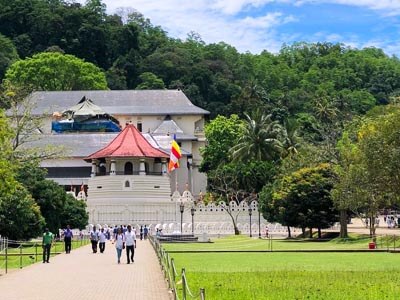
Kandy
Kandy is located in the mountainous and thickly forested interior of the island. The city is located in between multiple mountain ranges including the Knuckles mountain range and the Hanthana Mountain Range, giving the city an elevation of 500 metres (1,600 ft) above sea level. This sacred Buddhist site, popularly known as the city of Senkadagalapura, was the last capital of the Sinhala kings whose patronage enabled the Dinahala culture to flourish for more than 2,500 years until the occupation of Sri Lanka by the British in 1815. It is also the site of the Temple of the Tooth Relic (the sacred tooth of the Buddha), which is a famous pilgrimage site. It was declared a world heritage site by UNESCO in 1988.
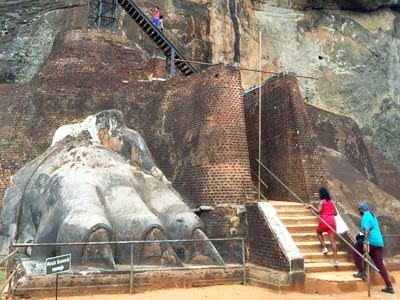
Sigiriya
Sigiriya or Sinhagiri is an ancient rock fortress located in the northern Matale District near the town of Dambulla in the Central Province, Sri Lanka. Sigiriya today is a UNESCO listed World Heritage Site. It is one of the best preserved examples of ancient urban planning. The Sigiriya site contains the ruins of an upper palace located on the flat top of the rock, a mid-level terrace that includes the Lion Gate and the mirror wall with its frescoes, the lower palaces located behind the lavish lower gardens, and moats and ramparts which protected the citadel. The site was both a palace and a fortress. The upper palace on the top of the rock includes cisterns cut into the rock. The moats and walls that surround the lower palace are exquisitely beautiful.
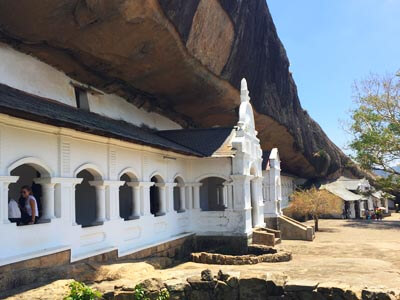
Dambulla Cave Temple
Dambulla is the largest and best-preserved cave temple complex in Sri Lanka situated in the central part of the country declare as a UNESCO World Heritage site in 1991. The rock towers 160 m over the surrounding plains.There are more than 80 documented caves in the surrounding area. Major attractions are spread over five caves, which contain statues and paintings. These paintings and statues are related to Gautama Buddha and his life. There are a total of 153 Buddha statues, three statues of Sri Lankan kings and four statues of gods and goddesses. The latter include Vishnu and the Ganesha. The murals cover an area of 2,100 square metres (23,000 sq ft). Depictions on the walls of the caves include the temptation by the demon Mara, and Buddha’s first sermon.
Surrounded on all sides by the Indian Ocean, Sri Lanka has plenty of beautiful beaches for you to retreat to when the tropical temperatures get a bit too close for comfort. There are long golden ones, there are dainty ones with soft white sand, there are wind and, wave battered ones and ones without a footstep for miles. Some have a slowly, slowly vibe and some have a lively party vibe, but whichever you choose, the beaches of Sri Lanka really are as gorgeous as you’ve heard.
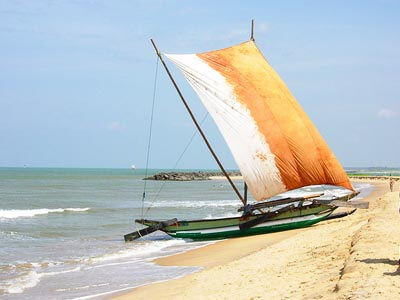
Negombo
An Ideal beach town for sun and sea lovers and about an hour’s journey from Colombo, Negombo is also a short trip from the airport in Katunayake. With fabulous sunsets, strolls along the shore, little shops selling garments and souvenirs, live bands playing, restaurants peppering almost the entirety of the seaside strip, water sports at the beach park; fishing, kite surfing, snorkeling, scuba, are a part of the everyday sights, sounds and things to do, when in Negombo. This beach town is easily accessible from E03 expressway while leaving from Colombo to the airport or after arrival in Sri Lanka.
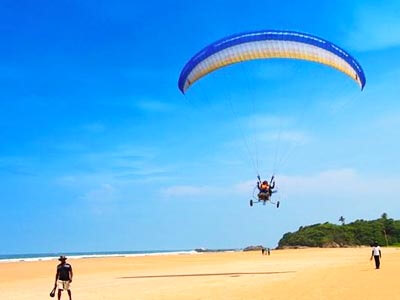
Bentota
Calmer ocean, scuba, snorkeling, sailing, deep-sea fishing, water skiing wind surfing, kayaking or canoeing, but who’s counting. Bentota beach is equipped for activities for virtually all sea goers looking to have a great time. Even the choice of accommodation has its advantages from luxury to budget. Finding places to stay is quite convenient if you book early or even if you’re passing through. However during peak season, it may be a task to infiltrate. Best recommended times for safe swimming conditions plus a range of other water sports and excursions is November through April.
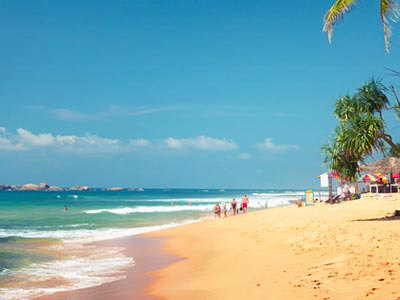
Hikkaduwa
Hikkaduwa Beach is well-known for its uniformity with the sunny-side of life. Be it sunbathing, sea-boat rides, scuba diving and snorkeling by the reef or even surfing, the coastal waters of Hikkaduwa is just the place to find the picture perfect scene for sea, sun, sand and much fun. Renting or buying almost any form of swim gear is easy here, with the Hikkaduwa town at a mere arm’s length from the beach. Shops here have been catering to tourists for many years and are amply seasoned in knowing their wants and needs, away from home. Peak visiting months include November and April, however January to March is also recommended.
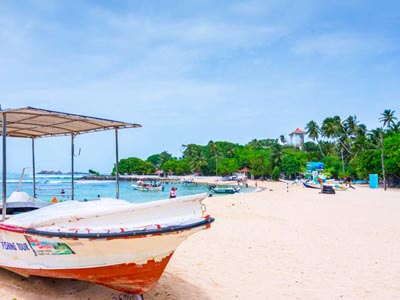
Unawatuna
Unawatuna beach draws both local and foreign visitors who have come to love this paradise isle profoundly, as well as the newbies. Unawatuna brings to life incalculable resorts, hotels, restaurants and small kiosks selling various goodies from seafood to clothing. Although most Galle town beaches on the one hand lure visitors through its irresistible magnetism of sun, sea, sand and relaxation, Unawatuna beach is all those and also an ideal place to take a dip in the ocean or indulge in some waters sports with family. For beautiful weather and calmer seas visit in November or April.
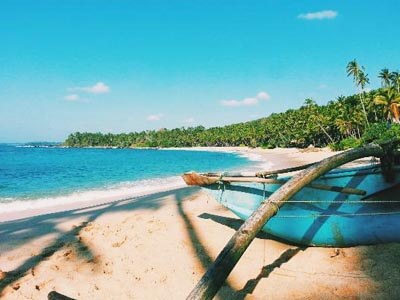
Tangalle
Hidden deep in the southern coast, the beaches of Tangalle are made for the visual admirer. With the ocean set in dark blue and you with a fresh drink in your hand ready for a relaxing stay, then you would be in the right place. If you do fancy a spot of sea bathing then head west of Tangalle town to where a few naturally secured bays between rocky promontories caress calmer waters. Sunbathing on the other hand is recommend for the east part of town where the warm sandy beaches are far too irresistible to pass on a tan. November to April and May through October, for best climatic conditions.
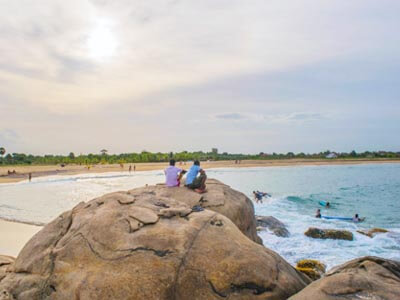
Arugam Bay
Arugam Bay is famous for its surfing points that attract surfers from around the world. Many of them make Arugam Bay their home during the surfing period, which is from April to October. Arugam Bay Point, which is at the tip of the bay is considered to be an advanced point, where the waves can rise to a height of five to ten metres depending on the swell and oceanic conditions. As such Arugam Bay point is a haven for experienced surfers. The actual ‘bay’ of Arugam Bay is peppered with small cosy hotels. One area of the beach is full of fishing boats as that is the livelihood of the coastal area, but this does not disturb the surfers.
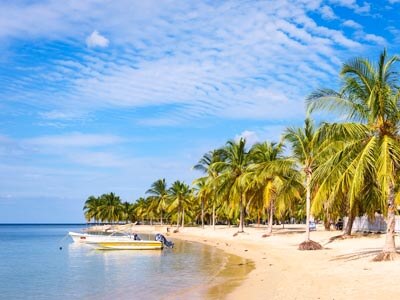
Pasikuda
Located in the East Coast of Sri Lanka, a visit to the shores of Pasikudah is an experience in itself. Pasikudah Bay is to the north of Batticaloa nestled on one side of Kalkudah beach. A perfect spot for sea-bathing, Pasikudah Bay’s flat bed is a great opportunity to take advantage of a good and safe wade or swim to as far as 200 metres from the shoreline. The shared shores of Pasikudah and Kalkudah are reef secured and thus the ocean waves are a lot calmer in this part of the Eastern Coast. The month of September, which is also considered the best month to visit the East Coast.
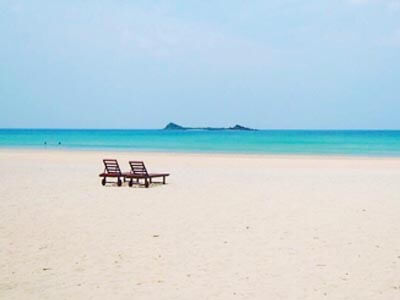
Nilaveli
Here’s where turquoise waters of the Indian Ocean kiss the sands, where heart beats rise and fall to its timely harmony. It’s not always that you see paradise in all its splendour, at Nilaveli, under 20 kilometres from Trincomalee town, the simplest pleasures are usually priceless. Whether you engage in a short boat ride to Pigeon Island, a delightful little landmass with its own coral reef, a few minutes from the coast, scuba diving, snorkeling or even waiting it out on the Nilaveli shore building sandcastles – any pick for that matter is quite surely going to be an experience that should not be missed. Best recommended times for visits are May to September.
Sri Lanka is one of the finest wildlife watching countries in South Asia. The island may be small in size, but the variety of habitats, and the wildlife found there, would do justice to a country many times its size. A lot of nature reserves and sanctuaries are in Sri Lanka in order to protect the wildlife from human interests that might harm the animals including poaching. Visitors are allowed in to these reserves where you can take safari trips with a trained guide provided by the reserves themselves.
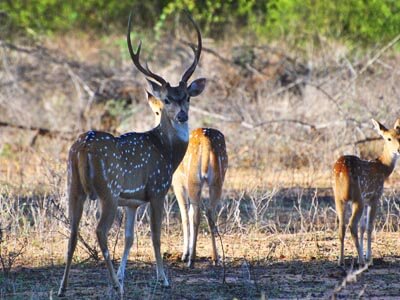
Yala National Park
Yala National Park is the most visited and second largest national park in Sri Lanka. The park consists of five blocks, two of which are now open to the public, and also adjoining parks. It is situated in the southeast region of the country, and lies in Southern Province and Uva Province. The park is best known for its variety of wild animals. It is important for the conservation of Sri Lankan elephants, Sri Lankan leopards and aquatic birds. The park is situated in the dry semi-arid climatic region and rain is received mainly during the northeast monsoon. Yala hosts a variety of ecosystems ranging from moist monsoon forests to freshwater and marine wetlands. It is one of the 70 Important Bird Areas (IBAs) in Sri Lanka. Yala harbours 215 bird species including six endemic species of Sri Lanka.
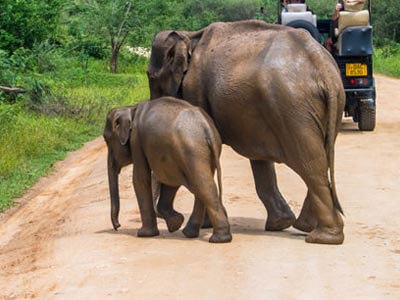
Udawalawe National Park
Udawalawe National Park lies on the boundary of Sabaragamuwa and Uva Provinces, in Sri Lanka. The national park was created to provide a sanctuary for wild animals displaced by the construction of the Udawalawe Reservoir on the Walawe River, as well as to protect the catchment of the reservoir. Udawalawe is an important habitat for Sri Lankan elephants, which are relatively hard to see in its open habitats. Many elephants are attracted to the park because of the Udawalawe reservoir, with a herd of about 250 believed to be permanently resident. The Udawalawe Elephant Transit Home was established in 1995 for the purpose of looking after abandoned elephant calves within the park.
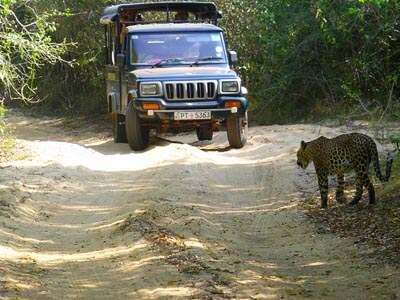
Wilpattu National Park
Wilpattu National Park (Willu-pattu; Land of Lakes) is a park located on the Northwest coast lowland dry zone of Sri Lanka. The unique feature of this park is the existence of “Willus” (Natural lakes) – Natural, sand-rimmed water basins or depressions that fill with rainwater. The park is 1,317 square kilometers (131, 693 hectares) and ranges from 0 to 152 meters above sea level. Nearly sixty lakes (Willu) and tanks are found spread throughout Wilpattu. Wilpattu is the largest and one of the oldest National Parks in Sri Lanka. Wilpattu is among the top national parks world-renowned for its leopard (Panthera pardus kotiya) population.
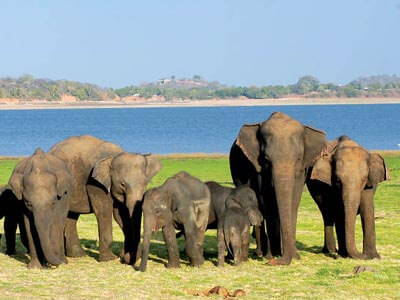
Minneriya National Park
Minneriya National Park is a national park in North Central Province of Sri Lanka. The reason for declaring the area as protected is to protect the catchment of Minneriya tank and the wildlife of the surrounding area. The tank is of historical importance, having been built by King Mahasen in third century AD. The park is a dry season feeding ground for the elephant population dwelling in forests of Matale, Polonnaruwa, and Trincomalee districts. Along with Kaudulla and Girithale, Minneriya forms one of the 70 Important Bird Areas (IBAs) of Sri Lanka. Large numbers of Sri Lankan elephants are attracted to grass fields on the edges of the reservoir during the dry season. The Minneriya tank contributes to sustain a large herd. Elephants gathered here is numbering around 150-200. Some reports account number of elephants to as high as 700.
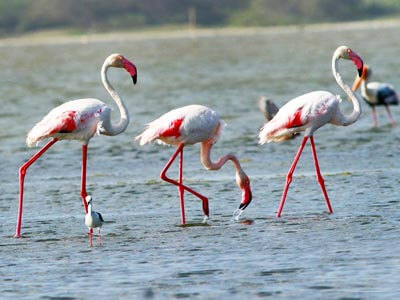
Bundala National Park
Bundala National Park is an internationally important wintering ground for migratory water birds in Sri Lanka. Bundala harbors 197 species of birds, the highlight being the greater flamingo, which migrate in large flocks. The area was declared a wildlife sanctuary on 5 December 1969, and was upgraded to a national park on 4 January 1993 with land area of 6,216 hectares (24.00 sq mi). However the park was regazetted in 2004 and the original park was reduced to 3,698 hectares (14.28 sq mi). In 1991, Bundala became the first site in Sri Lanka to be designated a Ramsar wetland. In 2005, Bundala was declared a Man and Biosphere Reserve by UNESCO. In January 2006, an area adjacent to Bundala covering an area of 3,339.38 hectares (12.8934 sq mi) was declared as the Wilmanna Sanctuary.
The hill country is a world away from the rest of Sri Lanka, with tangled green mountains rise from every quarter, their lower slopes swathed in verdant tea bushes. Spectacular waterfalls plunge over cliffs into valleys hemmed in between high mountainsides. The cloud forest above is alive with the secretive chirrupings of elusive mountain birds.
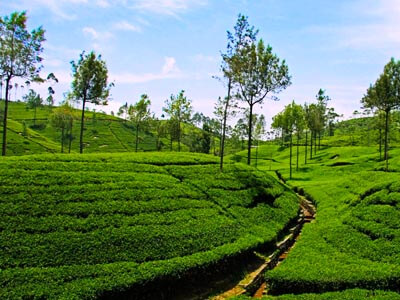
Nuwara Eliya
Nuwara Eliya is a city in the hill country of the Central Province, Sri Lanka. Its name means “city on the plain (table land)” or “city of light”. The city is the administrative capital of Nuwara Eliya District, with a picturesque landscape and temperate climate. It is at an altitude of 1,868 m (6,128 ft) and is considered to be the most important location for tea production in Sri Lanka. The city is overlooked by Pidurutalagala, the tallest mountain in Sri Lanka. Nuwara Eliya is known for its temperate, cool climate — the coolest area in Sri Lanka.
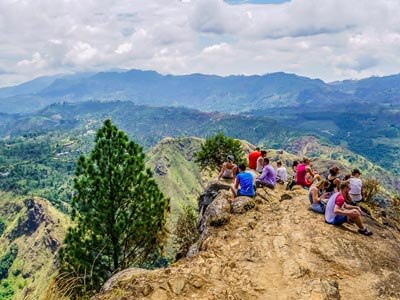
Ella
Ella is a beautiful small backpacker-hub on the southern edge of Sri Lanka’s Hill Country. It has become to go-to town in the hill country for tourists and as a result has a reasonably well-established tourism-orientated economy. For example, there is espresso coffee and fish and chips on offer, as well as lounge/backpacker -style bars aimed solely at the visitor. It’s situated in the middle of beautiful countryside, with small vegetable plots in the valleys, tea plantations on the hill slopes and forests on the tops. The climate throughout most of the year is typical of the high Hill Country, with a hot sun by midday, but a moderate air temperature. It will often rain in the afternoon, but only for an hour or so. A sweatshirt, or light jacket is needed at night. In December it can rain a lot!
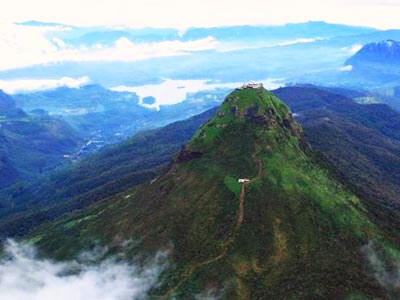
Adam’s Peak
Adam’s Peak – Sri Pada or Samanalakanda, (Butterfly Mountain) is a 2,243 m (7,359 ft) tall conical mountain located in central Sri Lanka. It is well known for the Sri Pada, “sacred footprint” rock formation near the summit, which in Buddhist tradition is held to be the footprint of the Buddha, in Hindu tradition that of Shiva and in Islamic and Christian tradition that of Adam, or that of St. Thomas. Adam’s Peak is important as a watershed. The districts to the south and the east of Adam’s Peak yield precious stones—emeralds, rubies and sapphires, for which the island has been famous, and which earned for its ancient name of Ratnadvipa. The pilgrims season to Sri Pada traditionally starts on the full moon of December and ends on the full moon of April . It takes a while for the crowds to build up but by the second half of the season they can be very large so it is best to go earlier. Weekends and particularly full moon days are always crowded and should be avoided. Most people make the climb at night so they can arrive in time for the sunrise.
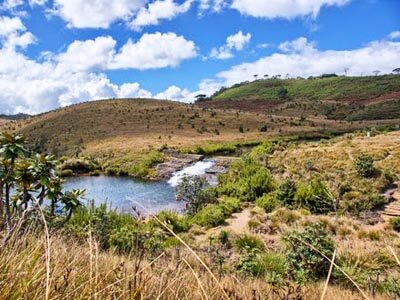
Horton Plains National Park
Horton Plains National Park is a protected area in the central highlands of Sri Lanka and is covered by montane grassland and cloud forest. This plateau at an altitude of 2,100–2,300 metres (6,900–7,500 ft) is rich in biodiversity and many species found here are endemic to the region. This region was designated a national park in 1988. The Horton Plains are the headwaters of three major Sri Lankan rivers, the Mahaweli, Kelani, and Walawe. Stone tools dating back to Balangoda culture have been found here. The plains’ vegetation is grasslands interspersed with montane forest and includes many endemic woody plants. Large herds of Sri Lankan sambar deer feature as typical mammals and the park is also an Important Bird Area with many species not only endemic to Sri Lanka but restricted to the Horton Plains. The sheer precipice of World’s End and Baker’s Falls are among the tourist attractions of the park.
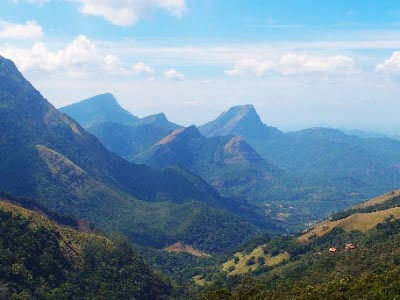
Knuckles Mountain Range
The Knuckles Mountain Range lies in central Sri Lanka, in the Districts of Matale and Kandy. The range takes its name from a series of recumbent folds and peaks in the west of the massif which resemble the knuckles of clenched fist when viewed from certain locations in the Kandy District. Whilst this name was assigned by early British surveyors, the Sinhalese residents have traditionally referred to the area as Dumbara Kanduvetiya meaning Mist-laden Mountain Range. The higher montane area is often robed in thick layers of cloud. In addition to its aesthetic value, the range is of great scientific interest. It is a climatic microcosm of the rest of Sri Lanka as the conditions of all the climatic zones in the country are exhibited in the massif.
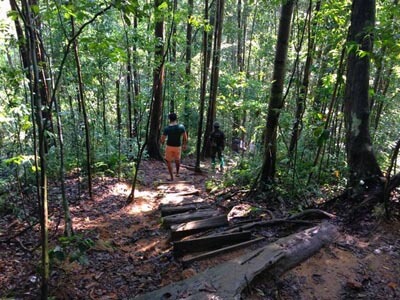
Sinharaja Forest Reserve
Sinharaja Forest Reserve is a national park and a biodiversity hotspot in Sri Lanka. It is of international significance and has been designated a Biosphere Reserve and World Heritage Site by UNESCO. The hilly virgin rain forest, part of the Sri Lanka lowland rain forests Eco region, was saved from the worst of commercial logging by its inaccessibility, and was designated a World Biosphere Reserve in 1978 and a World Heritage Site in 1988. The reserve’s name translates as Lion Kingdom.
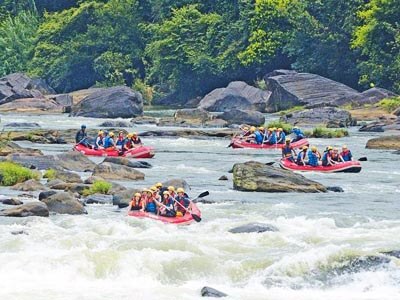
Kitulgala
Kitulgala is a small town in the west of Sri Lanka. A rain forestry area, which gets two monsoons each year, and is one of the wettest places in Sri Lanka. Nevertheless, it comes alive in the first three months of the year, especially in February, the driest month. The Academy Award-winning movie The Bridge on the River Kwai was filmed on the Kelani River near Kitulgala, although nothing remains now except the concrete foundations for the bridge Kitulgala is the base for white-water rafting in Sri Lanka. This area has most of the rain forest bird species that are found at the World Biosphere Reserve at Sinharaja, although in lower numbers. However, the secondary forest and cultivation at Kitulgala is more open than the pristine woodlands of Sinharaja, and elusive endemic species like Sri Lanka Spurfowl, Green-billed Coucal and Spot-winged Thrush may be easier to see. So Kitulgala is a primary spot for bird watching enthusiasts.

Nilaveli
Here’s where turquoise waters of the Indian Ocean kiss the sands, where heart beats rise and fall to its timely harmony. It’s not always that you see paradise in all its splendour, at Nilaveli, under 20 kilometres from Trincomalee town, the simplest pleasures are usually priceless. Whether you engage in a short boat ride to Pigeon Island, a delightful little landmass with its own coral reef, a few minutes from the coast, scuba diving, snorkeling or even waiting it out on the Nilaveli shore building sandcastles – any pick for that matter is quite surely going to be an experience that should not be missed. Best recommended times for visits are May to September.

